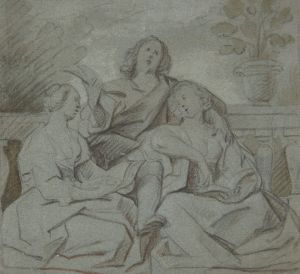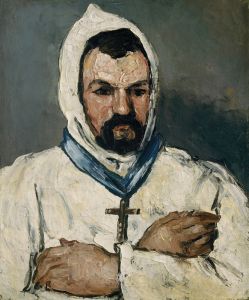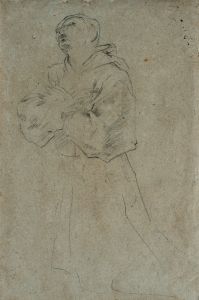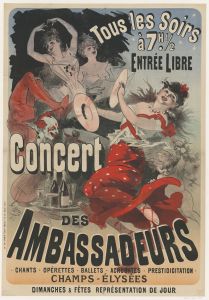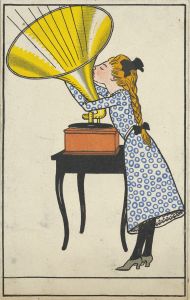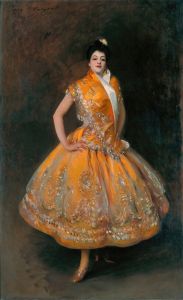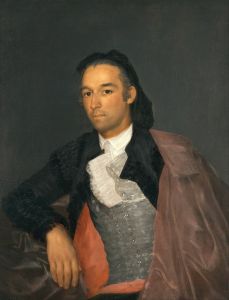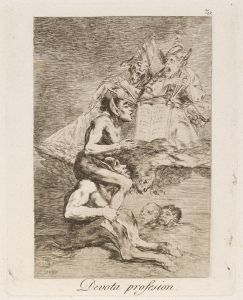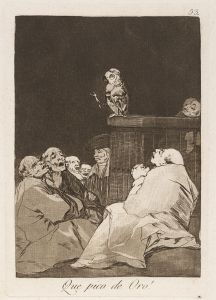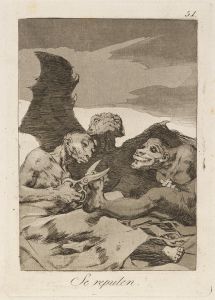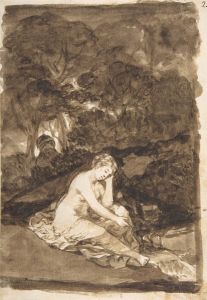
‘Nothing is Known of This’ ; two figures picking up a body in front of a church, a monk singing next to them and another in the background
A hand-painted replica of Francisco de Goya’s masterpiece ‘Nothing is Known of This’ ; two figures picking up a body in front of a church, a monk singing next to them and another in the background, meticulously crafted by professional artists to capture the true essence of the original. Each piece is created with museum-quality canvas and rare mineral pigments, carefully painted by experienced artists with delicate brushstrokes and rich, layered colors to perfectly recreate the texture of the original artwork. Unlike machine-printed reproductions, this hand-painted version brings the painting to life, infused with the artist’s emotions and skill in every stroke. Whether for personal collection or home decoration, it instantly elevates the artistic atmosphere of any space.
Francisco de Goya, one of the most significant Spanish artists of the late 18th and early 19th centuries, is renowned for his profound and often unsettling depictions of human nature and society. However, there is no record of a painting titled "Nothing is Known of This; two figures picking up a body in front of a church, a monk singing next to them and another in the background" attributed to Goya. It is possible that this description might refer to a lesser-known or misattributed work, or it could be a fictional or hypothetical piece.
Goya's oeuvre includes a wide range of subjects, from portraits of the Spanish aristocracy to haunting images of war and human suffering. His most famous works include "The Third of May 1808," which depicts the execution of Spanish rebels by French soldiers, and "Saturn Devouring His Son," a disturbing portrayal of the mythological tale. Goya's work is characterized by its emotional intensity, dramatic use of light and shadow, and a deep exploration of the darker aspects of human experience.
Throughout his career, Goya was deeply influenced by the tumultuous political and social changes occurring in Spain and Europe. He served as a court painter to the Spanish Crown, producing portraits that captured the personalities and power dynamics of the royal family and nobility. However, his later works, particularly the "Black Paintings" created towards the end of his life, reflect a more personal and pessimistic view of humanity.
Goya's art often blurs the line between reality and imagination, and he is known for his ability to convey complex psychological states and moral ambiguities. His etchings, such as those in the series "Los Caprichos" and "The Disasters of War," offer a critical commentary on the follies and atrocities of his time, showcasing his skills as both an artist and a social commentator.
If the description provided pertains to an actual work by Goya, it would likely fit within his broader thematic exploration of death, religion, and the human condition. However, without concrete evidence or documentation of such a painting, it remains speculative to attribute it to Goya. His existing body of work continues to be studied and celebrated for its profound impact on the development of modern art, influencing countless artists and movements that followed.
In summary, while Goya's contributions to art are well-documented and widely recognized, there is no verified information about a painting matching the description provided. As such, it is important to rely on authenticated sources and historical records when discussing the works of this influential artist.





